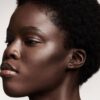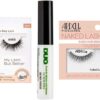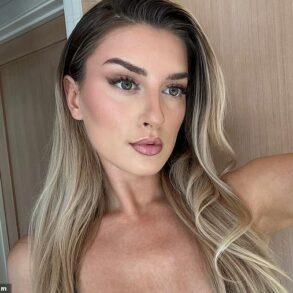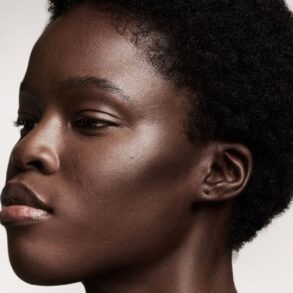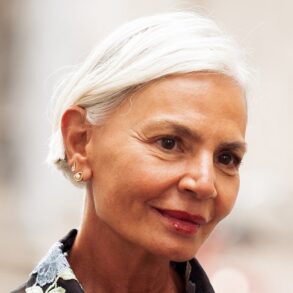PARIS — Puig has built itself into a 3 billion-euro-plus beauty and fashion powerhouse.
Masterminding the carefully planned and executed evolution is Marc Puig, a third-generation member of the Spanish group’s founding family. He became the privately held company’s chief executive officer in 2004 and added chairman to his title in 2007.
“Since 1914, every generation of the Puig family has endeavored to leave behind a better and stronger company than the one they inherited, guided by a way of doing business — the Puig way — that has been passed down from one generation to the next,” said Marc Puig.
“Our priority has always been to work on the success of our company and our brands for generations to come, and to preserve the purpose and values that have guided Puig for over 100 years,” he continued.
Puig has spent the past decades mining the company’s rich roots, while keeping a firm future focus.
The result? A portfolio with some of the most creative — and buzzy — beauty and fashion brands in the industry today. Think of Carolina Herrera’s Good Girl perfume poured in a towering stiletto-heeled, shoe-shaped bottle. Or there is Rabanne’s 1 Million scent flacon modeled after a gold bar, Dries Van Noten’s fragrance and lipstick packaging awash with patterns, textures and colors, and Carolina Herrera’s jewelry-like makeup.
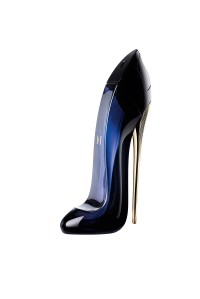
Good Girl from Carolina Herrera.
Courtesy Photo
Other Puig-owned brands include Jean Paul Gaultier, Nina Ricci, Byredo, Penhaligon’s, L’Artisan Parfumeur, Kama Ayurveda and Loto del Sur. The company holds the licenses for Christian Louboutin beauty and Comme des Garçons Parfums in the luxury category, as well as those of Antonio Banderas, Adolfo Dominguez and Benetton in the lifestyle fragrance segment.
Overall, business has boomed faster than even Puig expected. In 2022, the company registered net sales of 3.62 billion euros, a 40 percent rise in reported terms and a 30 percent increase on an organic basis from the prior year.
In March 2021, almost one year into the coronavirus pandemic, Puig publicly stated its goal was to double 2020 sales in three years and triple them in five.
“By the end of 2022, we had already more than doubled our 2020 revenue figure [surpassing 3 billion euros] — that is, one year ahead of schedule, and we project to reach more than 4 billion euros this year,” said Marc Puig.
This performance has earned the group this year’s WWD Honor for Best-Performing Beauty Company, Large Cap.
Company sales in 2022 were driven by each of its product categories, which posted double-digit percentage gains. Business was spurred by a strong performance of Puig’s own brands, amid a rise in consumer spending — especially for perfumes — and despite macroeconomic difficulties, such as inflation and rising interest rates.
“The extraordinary performance of our business over the last few years is due to a number of choices we have made over time,” said Marc Puig. “First, 20 years ago, we decided to focus on prestige products versus mass categories, building a portfolio of carefully curated brands, where more than 90 percent of our sales are from brands we own; expand into niche fragrances and then complement our fragrances and fashion category with makeup and skin care, and pursue careful, selective and value-accretive acquisitions. We like to represent Puig as the home of creativity.”
This involves a lot of storytelling, often with a great dose of humor. Take, for instance, the spot for the new Gaultier Divine women’s scent in which Yara Shahidi, surrounded by muses, holds a bottle containing a miniature boat floundering as she rocks it to and fro. The camera zooms in and there is then a life-size ship, with a captain who catches her eye — and her his. This love drama was set to Maria Callas’ “Casta Diva,” remixed by Massive Attack.
Puig has been a pioneer in simultaneously — and seamlessly — building a brand’s beauty and fashion businesses. It’s a feat that has been tricky for many other multinationals, since beauty and fashion are such different activities. But in today’s competitive marketplace, it has become increasingly important to achieve a strong, single brand image.
Rabanne has this ethos, with beauty and fashion, designed by Julien Dossena, firing on all cylinders. This past summer, the brand abbreviated its name simply to Rabanne (in lower case) by dropping the first name Paco, launched makeup and kicked off a direct-to-consumer intensification with a flagship boutique in New York City — all while slowly applying its new holistic visual identity to various product lines and retail spaces.
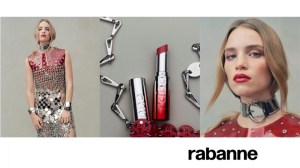
Rabanne mixes fashion and beauty.
The unified fashion-beauty image is dubbed One Rabanne and sprang to life right before the brand’s spring 2024 collection showed with expanded ranges of evening, denim and knitwear.
In another example, the Carolina Herrera brand brought its fashion and beauty closer than ever by introducing its first range of lipsticks and compacts in packaging so sculptural and precious it could double as jewelry.
Carolina Herrera New York Makeup, launched in mid-March 2020, also closely echoes the personal elegance of the fashion house’s founder — and the color-intensive approach of its current creative director, Wes Gordon — who has kept the brand prestigious and desirable.
Earlier this month, Carolina Herrera, designed by Gordon, was the guest of honor at Dubai Fashion Week.
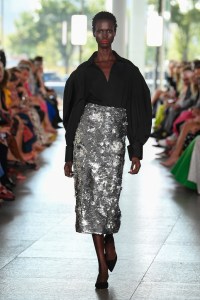
Carolina Herrera RTW Spring 2024
Giovanni Giannoni/WWD
Then there’s Jean Paul Gaultier. In 2011, Puig took a majority stake in the label’s fashion activity, and in mid-2016, it snapped up Gaultier’s fragrance license, which included the blockbuster Le Male men’s scent, housed in a torso-shaped bottle and tin-can outer packaging.
While building on the perfume activity, Gaultier injects creativity into its fashion. Helping raise the house’s visibility in couture is a collaboration with a revolving cast of creatives. Sacai’s Chitose Abe was the first to sign on, designing the fall 2020 line; subsequent others have included Glenn Martens and Dossena.
Puig acquired a majority stake in Dries Van Noten in 2018. At the time, the Belgian fashion designer didn’t have fragrance or cosmetics, but Puig changed that just four years later. The group allowed the namesake designer to approach perfume and lipstick just like he sets out about creating his fashion, garden or home décor — with a clash of concepts and a riot of colors, prints and textures. In one swoop, 10 fragrances, 30 lipsticks plus accessories were launched that March.
Then last summer, Dries Van Noten unveiled its newest retail concept in Paris. The 650-square-foot corner unit showcases beauty alongside leather goods, jewelry and other accessories from the fashion collection, demonstrating how Van Noten’s beauty products commune seamlessly with his other designs.
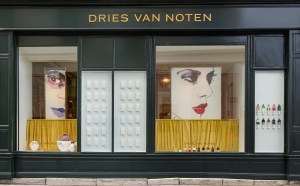
The facade of Dries Van Noten’s first beauty boutique, which also carries fashion accessories.
Jean-Pierre Gabriel
While most of Puig’s growth is organic, some has come through acquisitions. In May 2022, it purchased a majority share of Swedish prestige fragrance, beauty and lifestyle brand Byredo. Also last year, Puig took majority stakes in wellness brands Kama Ayurveda and Loto del Sur, from India and Colombia, respectively. Such deals greatly increased the number of Puig’s own sales points and brought 1,000 new employees into the group.
Another way Puig has transformed itself for the future was by shaking up its business structure. On Jan. 1, 2021, it established three divisions — Beauty and Fashion, Charlotte Tilbury and Derma.
Marc Puig explained in a December 2020 interview that the shift had two main drivers. First, it was to initiate a new phase for the company, thinking of how the group will be organized once the business is transferred to the fourth generation of family members.
Puig has said that the fourth generation will not run the company — they will not be on its management team, but on the group’s governing body.
The restructuring also stemmed from recent industry changes. Eighteen years ago, Puig, which then had a large and less coherent portfolio of brands, chose to focus on fashion and fragrance in order to succeed and gain critical mass, before possibly broadening its scope.
“We used to say: ‘We build the image of a brand through fashion, and we translate that image into the fragrance world — whether that image is from a fashion brand we own or a license,’” Puig recalled in the 2020 interview.
That strategy was rethought after licensing big brands lost its luster. Puig had had, for instance, major fragrances licenses with Prada and Valentino that ended. The group then began focusing more on brands where it has control or ownership.
Simultaneously, niche brands — especially in perfume — were gaining significant traction, which is why the group acquired Penhaligon’s and L’Artisan Parfumer in 2015. And as emerging markets have risen, Puig took minority stakes in more companies, such as Granado in Brazil.
Moves like that helped Puig increase its share of the selective fragrance market to 10 percent. Rabanne, Carolina Herrera and Jean Paul Gaultier all figure among the top 20 prestige perfume brands worldwide.

Yara Shahidi, the face of Jean Paul Gaultier’s Divine fragrance, wearing the brand at the 2023 Met Gala.
courtesy
But in other product categories, such as makeup and skin care, Puig was underrepresented. So in March 2018, it inked a beauty license with shoemaker Christian Louboutin, marketing the group’s first incursion into the world of makeup.
Next, in June 2020, Puig took a majority stake in Charlotte Tilbury Beauty, already a highly successful color cosmetics brand with a large digital footprint. That brand alone became one of Puig’s divisions.
The group put into the Derma division the two Puig family-owned dermocosmetics brands sold through pharmacies — Uriage and Apavita. Those two brands together with Isdin, in which Puig has a 50 percent stake (though Isdin is not consolidated in group figures), Puig is the third-largest European player in the dermocosmetics category sold through pharmacies.
Puig set out to have a portfolio of brands in different sectors, with each highly attractive. And the dream has become reality — bearing fruit.
Next steps are being considered.
“Puig is currently assessing all strategic alternatives for the future of the company, including the option of opening our capital to third parties via an IPO,” said Marc Puig. “This is only one of several options, and no decision has been taken.
“We could also maintain the status quo. Whatever we decide, the family will remain for the long term,” he continued. “For the last few years, we have already been running the company according to the best-in-class principles that characterize a European publicly listed entity, as we deeply value the rigor that these principles bring and believe this construct to be fair for all Puig stakeholders, as well as for the generations to come.”
Whatever the decision, environmental, social and governance issues will continue to be corporate commitment mainstays. Puig’s goals in that arena align with aims of the Paris Climate Agreement, which sets out to limit global temperatures to 1.5 degrees Celsius by 2030 and become net zero by 2050.
To help attain its sustainability goals, Puig’s roadmap includes promoting circular economy and end-of-life principles for packaging, enhancing traceability and upping the amount of certified raw materials used in product formulas.
Puig has attained Gold Medal certification from EcoVadis and an A-minus from the Carbon Disclosure Project — or CDP — Climate. The group also participated in the 2022 COP27 in Sharm El-Sheikh, Egypt.
This post was originally published on this site be sure to check out more of their content.


